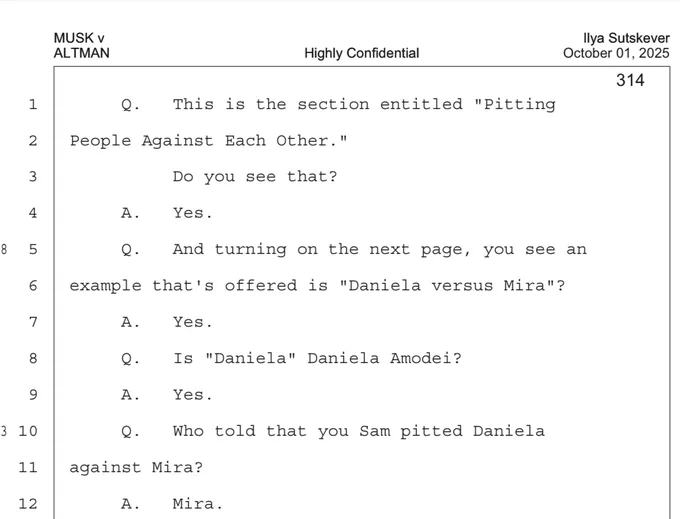Founder and CEO of eToro the social investment network. Passionate about economics, internet, technology and blockchain. Some say Invented NFT Also on assia.eth
eToro
Joined October 2010
- Tweets 9,832
- Following 10,407
- Followers 49,304
- Likes 10,043
Pinned Tweet
@brettking checkout #bitcoin price, up from 10 cents to 2.5$ , seems like it is taking off. bit.ly/mxS6yu
Yoni Assia retweeted
I am looking forward to explaining @ARKInvest’s #bitcoin price target at @official_cantor fitzgerald’s crypto conference this week. While stablecoins are usurping one of the roles we expected #BTC to play in emerging markets, its role as a store of value (think gold) should have soared!
Thank you US for getting the rally back !
Yoni Assia retweeted
Do you know your Bitcoin history?
Vitalik didn’t think he could execute his dreams for colored coins on Bitcoin so he left to build Ethereum.
10 years later Atomicals was born and now BitMeta are taking bitcoin 2.x to a whole new level.
Nostalgy…
The first concept of what was to become Colored Coins appeared in a blog post by Yoni Assia, CEO of eToro, on March 27, 2012. Titled “bitcoin 2.X (aka Colored Bitcoin)
historyofbitcoin.io/timeline…
This means bitcoin can become a smart contract platform on its own!
The Ancient Technology Nobody Used
Here's what nobody realizes: OP_RETURN was created by Satoshi Nakamoto in Bitcoin 0.1.0 (2009).
For 16 years, this technology sat dormant.
Bitcoin Core v30 (October 2025) just removed the limits: 80 bytes → 4MB.
Pieter Wuille (SegWit co-creator) gave it a "Concept ACK." When Bitcoin's architects approve, it's not speculation.
Nostalgy…
The first concept of what was to become Colored Coins appeared in a blog post by Yoni Assia, CEO of eToro, on March 27, 2012. Titled “bitcoin 2.X (aka Colored Bitcoin)
historyofbitcoin.io/timeline…
Reflection time: If you could go back, what's the first thing you'd tell your younger self?
Our popular investors are dropping some serious knowledge about their journey. Spoiler: It's more than "save your money." 😉
Watch now for their advice to their younger selves.
Yoni Assia retweeted
The Bank of England opted to hold rates at 4%, signaling patience ahead of the government’s upcoming budget and clearer evidence of disinflation. Policymakers want to see how fiscal measures, particularly expected tax rises, will affect growth and prices before committing to cuts. Still, the tone was notably dovish: the guidance now points to rates moving “gradually downward,” indicating that the first reduction could come as soon as December if inflation continues easing.
For retail investors, this suggests a shifting landscape.Savings rates may soon fall, while lower borrowing costs could support equities and housing. However, the cost-of-living squeeze remains real, with wage growth softening and disposable incomes under strain.
The Bank will weigh this against falling energy prices and slowing demand. Sustained progress toward its 2% inflation target, combined with fiscal clarity from the budget, will determine when rate cuts finally begin.
Very interesting take, if 40% of your VC investments aren’t going to zero, you are not taking enough risk!
Sequoia distributed over $50B while Roelof was the steward running Sequoia US since 2017
One of the first things @roelofbotha coached me on when I joined Sequoia was to look at each fund’s “write off rate”
Any fund with a write off rate below 40% wasn’t taking enough risk
Yoni Assia retweeted
If @BrianRoemmele thinks #Tesla’s A15 chip will be a big deal, then it will be a big deal.
Yoni Assia retweeted
Reflecting back to an incredible 3-day @eToro Popular Investor Summit! 📚
It was an inspiring experience filled with insightful presentations, from Nuseir Yassin‘s storytelling energy, to @yoniassia ’s vision for the future of eToro, and @samuelrudnick ’s updates about the Popular Investor program.
We also heard from other great speakers discussing what’s moving the markets today and how AI is transforming development, enabling apps to be built in hours instead of months.
Beyond the presentations, the highlight for me was reconnecting with old friends and meeting new ones who share the same passion for investing. The conversations, ideas, and sense of community made it a truly memorable few days.
Already looking forward to the next one!
A huge thank you to everyone who made it happen Shani Blackman Sam North and to all the amazing people I met, let’s stay connected!
👉 You can find my profile here: [etoro.tw/44wxmuY]
Not a financial advice.
Copy Trading does not amount to investment advice. Your investments value may go up or down.
What could possibly go wrong when these are the people building super intelligence?
Very interesting!
@elonmusk should help @Fidias0 with @X or at least replace the @Wikipedia links to @grokpedia_ai in @grok answers…
3rd and final day of eToro’s Investor Summit 2025!
200+ investors, 3 days of insights, and endless conversations.
The final sessions were led by our VP of Corporate Communications, @ButlerAmy, , and co-hosted by our Market Analyst, @Sam_North_07.
What a summit and what a way to celebrate 15 years of social trading and investing.
Jay is one of the OGs of our pro investor program, always great connecting !
Just got back from an amazing few days in Cyprus for the @eToro Popular Investor Summit. Met some great clients, amazing investors and excellent eToro staff.
Seeing old faces I've not seen for years, and meeting new people who share my passion for investing is always great fun.










































